
Understanding Brand Identity and Its Importance
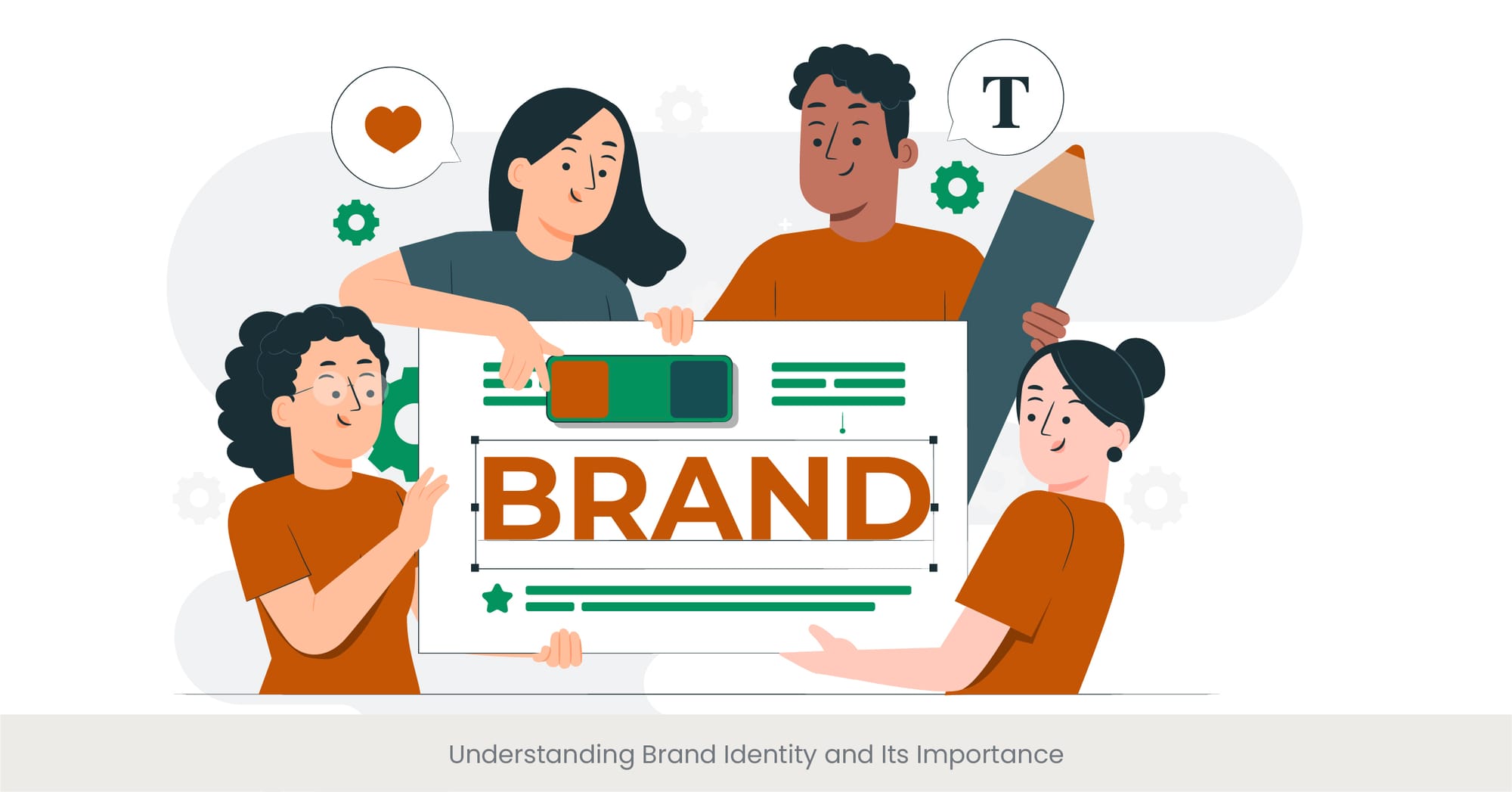
Introduction: Defining Brand Identity in the Corporate Landscape
Brand identity is more than just a logo or a color scheme; it's the amalgamation of visual, verbal, and emotional attributes that define a company. In the competitive realm of recruitment, a clear and compelling brand identity is crucial as it communicates the essence of the company to potential employees. This section explores the foundational elements of brand identity and its critical role in attracting top talent.
Background: The Pillars of Brand Identity
At its core, brand identity includes the visual elements (logos, color palette, typography), the company's mission and values, and the tone of communication used across all social media campaign platforms. These elements work together to create a cohesive perception in the minds of both consumers and potential employees. A strong brand identity not only distinguishes a company from its competitors but also builds trust and alignment with its target audience.
Real-world Applications: Brand Identity in Recruitment
An effective brand identity in a recruitment marketing strategy ensures that all presentation materials reflect the company's core values and aesthetic, thereby attracting candidates who resonate with what the company stands for. For example, a tech startup may emphasize innovation and agility in its brand identity, using modern design elements and forward-thinking messaging in its recruitment marketing strategy and presentations to appeal to dynamic and creative candidates.
References and External Validation
The importance of a robust brand identity is well-documented. According to a study by the Corporate Leadership Council, companies with strong brands attract high-quality candidates 50% faster than those with weaker brands. Additionally, data from LinkedIn’s Global Recruiting Trends report highlights that 75% of job seekers consider an employer’s brand before even applying for a job, underscoring the significant impact of brand identity on recruitment success.
Ready to evolve your brand's design? Contact INK PPT for expert guidance and tailored branding solutions that align with your business goals. Reach out to us here to start your brand transformation journey today.
Techniques for Visual Branding in Job Interview Presentations

Introduction: Enhancing Recruitment with Visual Branding
Visual branding plays a pivotal role in recruitment presentations, as it immediately communicates the company’s identity and values to potential candidates. Effective visual branding not only attracts attention but also creates a lasting impression, essential in competitive job markets. Incorporating PowerPoint presentations as a tool can significantly enhance this visual branding, offering a structured and impactful way to present recruitment marketing slides and template components tailored for specific job interviews and industries. This section explores key techniques to incorporate visual branding effectively in your recruitment marketing presentations.
Background: Elements of Visual Branding
Visual branding involves more than just the use of company colors and logos. It encompasses the application of a consistent design theme, typography, imagery, and even the layout that aligns with the company’s identity. These elements should work together seamlessly to effectively convey the company’s message and ethos visually and engagingly.
Real-world Applications: Implementing Visual Branding Techniques
A practical example of visual branding in action can be seen in a company that integrates its brand colors and logo consistently across all slides, ensuring that every element of the presentation reflects its corporate identity. Beyond colors and logos, the company might use custom graphics that resonate with its industry, focus and values, such as eco-friendly icons for a sustainability-focused company, or dynamic, tech-inspired slide backgrounds for a software developer.
References and External Validation
The effectiveness of strong visual branding is supported by various studies. Research published in the Journal of Marketing Communications finds that consistent use of visual elements can increase the recognizability of a brand by up to 80%. Additionally, a case study featured in the Harvard Business Review highlighted a corporation that revamped its recruitment presentations with strong visual branding, resulting in a 30% increase in candidate engagement during recruitment fairs.
Aligning Design with Company Values and Ethics
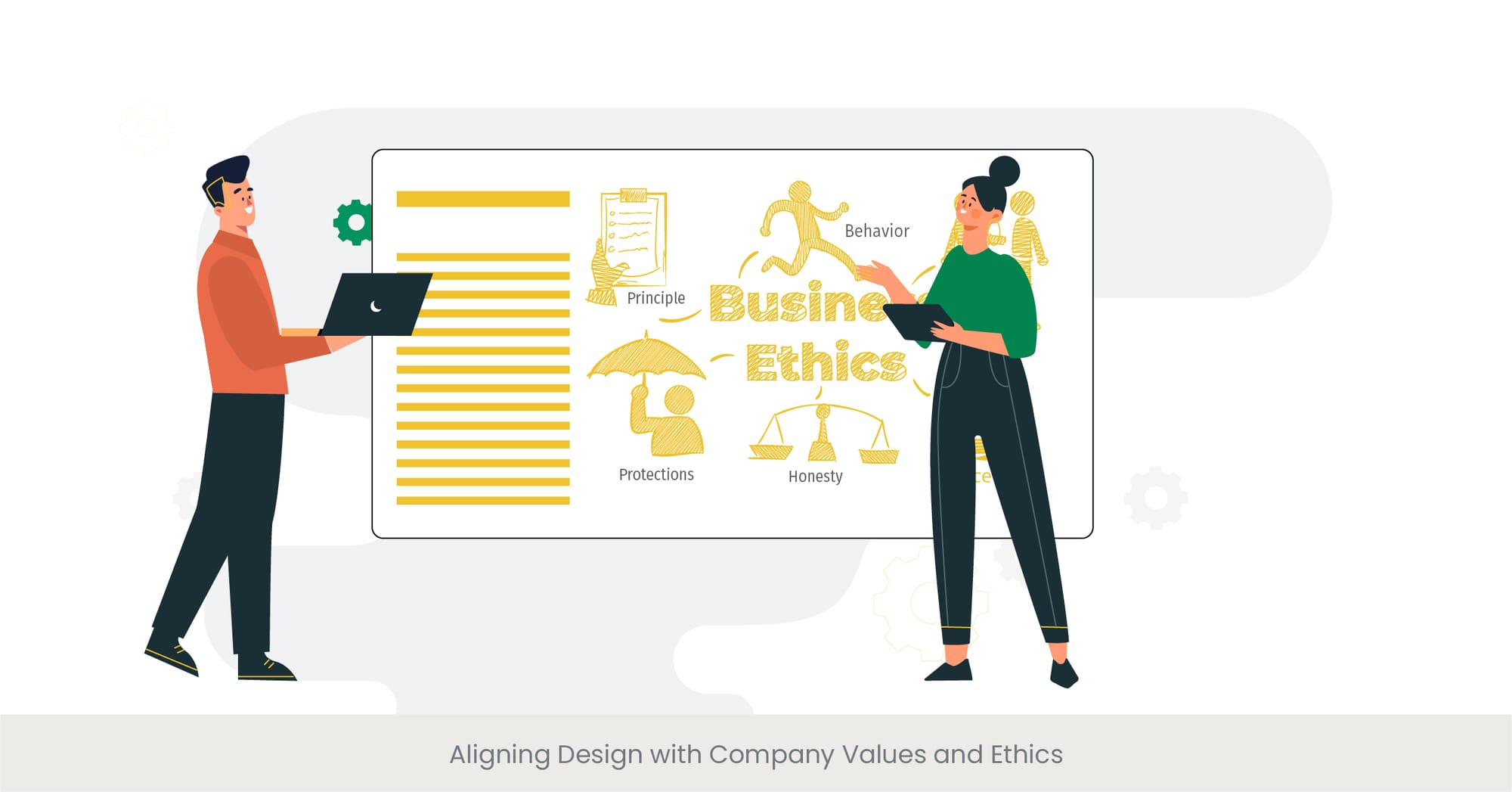
Introduction: Cohesion Between Design and Corporate Ethos
In a landscape where companies are increasingly judged by their employees based on their ethical stance and corporate values, ensuring that recruitment presentations reflect these aspects is crucial. This section explores some ideas on how to align design elements in recruitment presentations with a company’s core values and ethics, enhancing credibility and resonance with the audience of potential candidates.
Background: The Importance of Ethical Alignment
Corporate values and ethics are not just internal guidelines but are pivotal in shaping public perception and employee engagement. When these values are clearly reflected in all company materials, including recruitment and interview presentations, they communicate integrity and commitment to potential employees. Design elements of the job description and job interview presentation must, therefore, resonate with these values, whether it’s through imagery, tone, or content.
Real-world Applications: Design that Reflects Corporate Ethics
For instance, a company that values transparency and openness might use clear, straightforward designs and direct communication in its recruitment email marketing materials. Visual elements could include open, airy layouts with bright, inviting colors that suggest openness. In contrast, a company with a focus on innovation might use cutting-edge design elements and futuristic themes to reflect its forward-thinking ethos.
References and External Validation
Studies underscore the importance of aligning design with corporate values. According to research published in the Journal of Business Ethics, companies that effectively communicate their ethical standards through visual branding see a higher level of trust and commitment from their employees. Additionally, a report by the International Association of Business Communicators found that potential candidates are 40% more likely to apply to a company whose values are clearly communicated and visually aligned in their recruitment materials.
The Role of Employee Testimonials and Stories

Introduction: Humanizing the Brand Through Employee Voices
Employee testimonials and stories are powerful tools in recruitment presentations, offering potential employer a genuine, human perspective on the company’s culture and work environment. This section explores some ideas on how integrating employee narratives can enhance the authenticity and attractiveness of a recruitment campaign presentation, helping candidates connect with the company on a personal level.
Background: The Impact of Personal Narratives
Personal narratives from employees provide insight into the day-to-day experiences and real benefits of working at a company. These stories can effectively humanize the brand, breaking down corporate barriers and showcasing the company’s commitment to its workforce. When potential candidates see and hear from their future colleagues, it creates a sense of trust and belonging even before they join the team.
Real-world Applications: Leveraging Testimonials in Recruitment
Maintaining brand consistency is crucial in multi-platform recruitment campaigns, ensuring a unified message across all channels. An effective approach is to include a variety of testimonials and slides in the recruitment presentations that cover different aspects of company life—from career growth opportunities and mentorship programs to work-life balance and community involvement. For example, interview presentation for a job post a tech company might feature a video testimonial from a software engineer discussing innovative projects they’ve worked on, coupled with a slide or another from a HR manager highlighting the supportive company culture.
References and External Validation
The effectiveness of using employee testimonials in recruitment is well-supported by data. A study in the Journal of Human Resource Management found that companies utilizing employee stories in their recruitment materials increased their application rates by up to 25%. Furthermore, feedback gathered from new hires frequently cites these personal stories as a significant factor in their decision to accept a job offer, illustrating the tangible benefits of this approach for hiring manager.
Designing for Brand Consistency Across All Materials
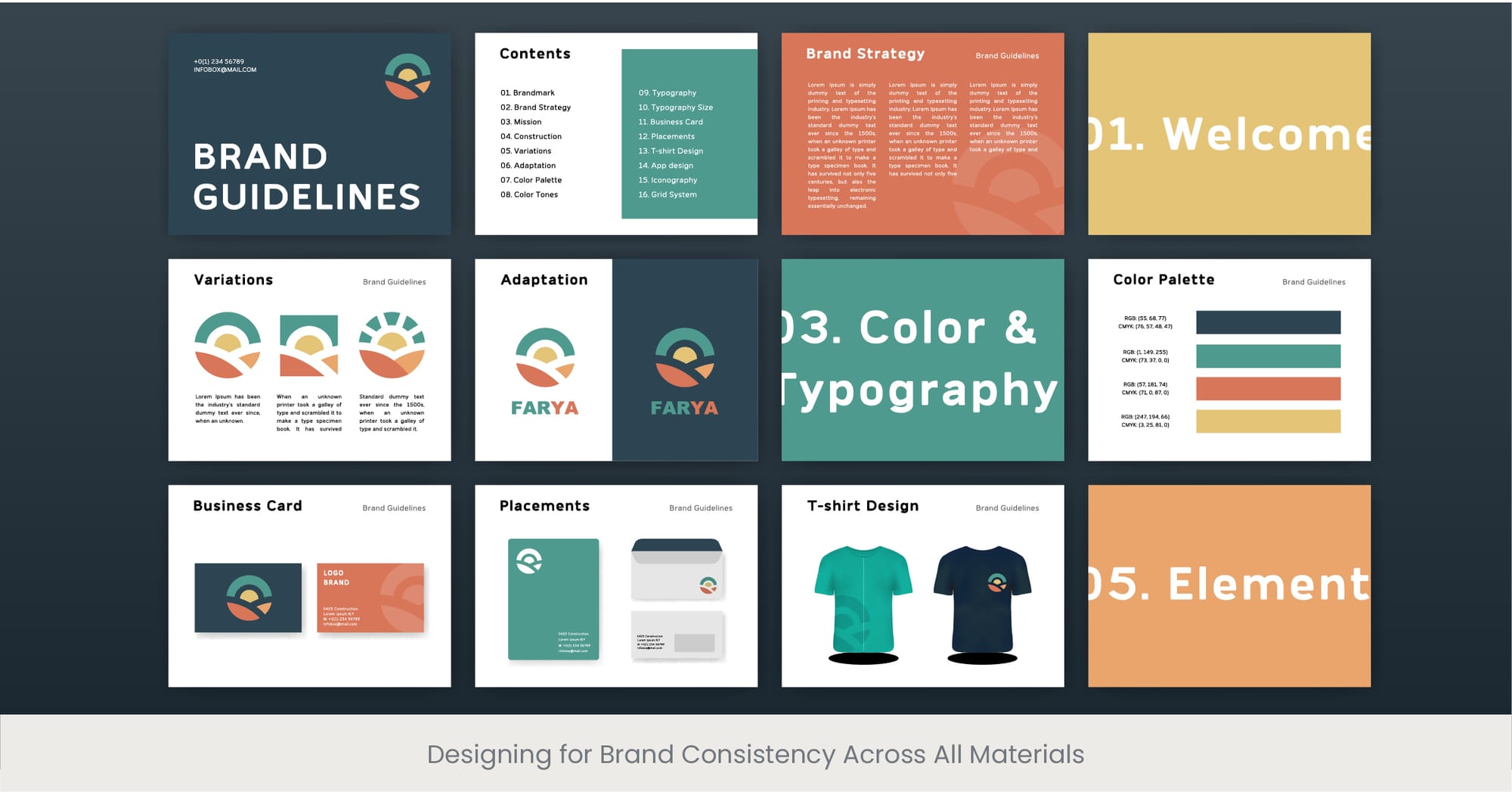
Introduction: Ensuring Uniformity in Brand Presentation
Brand consistency is key to building trust more confidence and recognition, especially in recruitment where first impressions are crucial. This section discusses the importance of maintaining a uniform brand appearance across all recruitment materials, from presentations to brochures and digital content, ensuring that every touchpoint reflects the company's identity accurately and effectively.
Background: The Fundamentals of Brand Consistency
Consistency in brand presentation involves the coherent use of visual elements such as logos, color schemes, and typography, as well as maintaining a uniform tone and messaging across all social media platforms. This alignment helps reinforce and highlight the powerpoint the brand’s identity and values, making the company easily recognizable and trustworthy to potential candidates.
Real-world Applications: Consistent Branding in Action
A practical example is a multinational corporation that uses a standardized template for all its various recruitment marketing materials, featuring the company logo, color palette, and a set signature style that appears in every presentation, document, and digital interface. This not only strengthens the brand’s visual impact but also ensures that candidates receive the same brand experience, whether they are looking at a job advertisement, browsing the company website, or watching a recruitment video.
References and External Validation
The effectiveness of consistent branding is underscored by numerous studies. Research published in the Journal of Brand Management reveals that companies with consistent branding across all recruitment channels enjoy up to 33% increase in brand recall among potential candidates. Moreover, a survey by the Employer Branding International shows that consistent brand presentation increases candidate application rates by 23%, highlighting its significance in effective recruitment.
Case Studies: Attracting High Quality Candidates with Brand-Driven Recruitment Successes

Introduction: Real-World Examples of Effective Branding in Recruitment
Exploring real-world examples offers invaluable insights into how effectively implemented brand, recruitment marketing strategies, and advertising can drive recruitment success. This section highlights several case studies where companies have successfully leveraged their brand identity to attract top talent and enhance their hiring processes.
Background: The Power of Branding in Recruitment
Strong brand identity not only distinguishes a company from its competitors but also plays a crucial role in attracting potential employees who align with the company’s culture and values. These case studies demonstrate how consistent and compelling branding can transform recruitment outcomes by making organizations more attractive to high-quality candidates.
Real-world Applications: Success Stories in Brand-Driven Recruitment
One notable example involves a tech giant known for its innovative culture. By integrating its brand themes of creativity and innovation into all recruitment materials, the company managed to attract a diverse pool of candidates eager to contribute to groundbreaking projects. Another case is a healthcare provider that emphasized its commitment to employee wellness and community service in its recruitment campaigns, successfully attracting professionals who value corporate social responsibility.
References and External Validation
These success stories are backed by positive recruitment metrics and enhanced employer branding. For instance, the tech company reported a 40% increase in applications from highly qualified candidates within six months of revamping its recruitment materials to reflect its brand identity more accurately. Similarly, the healthcare provider saw a 50% improvement in employee retention rates, attributed to better alignment between the company’s stated values and the actual experiences of new hires, as documented in the Journal of Corporate Recruitment.
Evolving Your Brand: When and How to Update Your Design
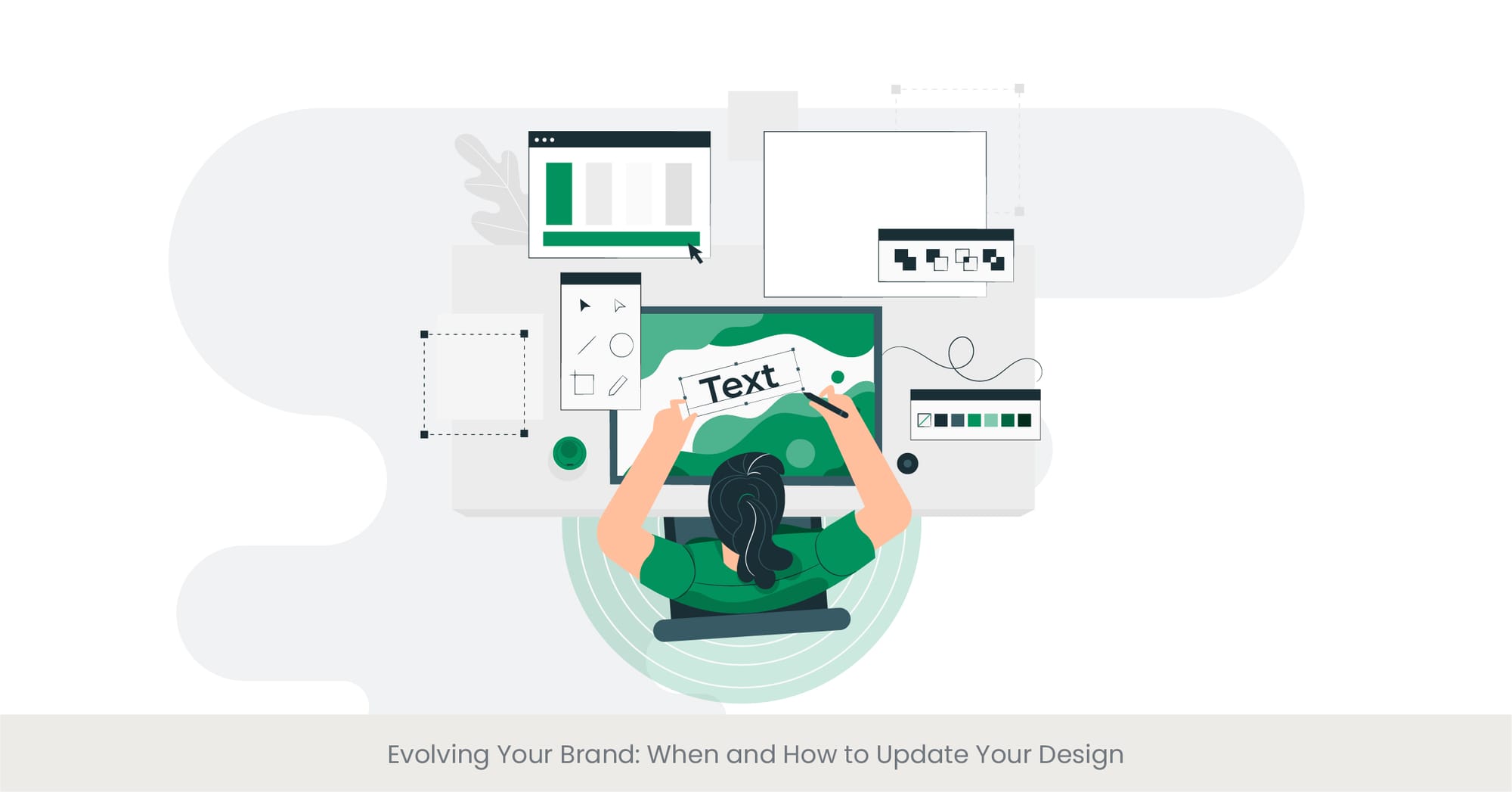
Introduction: Keeping Your Brand Relevant and Resonant
As markets evolve and company objectives shift, refreshing your brand's design can be crucial to maintaining its relevance and appeal. This section explores the triggers for a brand update and outlines strategic approaches to evolving your brand's visual identity, presentation and messaging to stay aligned with changing business landscapes and workforce expectations.
Background: Recognizing the Need for Change
Updating a brand’s design isn’t just about aesthetics; it’s about ensuring that the brand continues to accurately represent the company’s current values, culture, and strategic direction. Common triggers for a brand refresh include significant company milestones, shifts in target demographics, or changes in the industry landscape that might affect how the brand is perceived.
Real-world Applications: Strategic Brand Evolution
For example presentation today, a consumer electronics company might update its brand design to reflect cutting-edge technology and innovation ahead of launching a new product line. This could involve modernizing its logo, revising its color scheme, and updating its recruitment presentations to showcase a more futuristic company image that attracts tech-savvy talent.
Looking for more insights on branding strategies? Check out our blog for the latest trends and tips on updating your brand design. Explore our blog to stay ahead of the competition.
References and External Validation
The importance of timely brand updates is well-supported by marketing research. A study in the Journal of Brand Strategy found that companies that proactively update their branding every 5 to 7 years retain higher levels of consumer and candidate interest compared to those that do not. Furthermore, case studies of successful rebrands, such as a major retail chain that underwent a brand overhaul to appeal to a younger demographic, show a subsequent 30% increase in job applications from targeted age groups, as reported by HR Magazine.
Engaging Stakeholders in Brand Representation through Social Media Campaigns
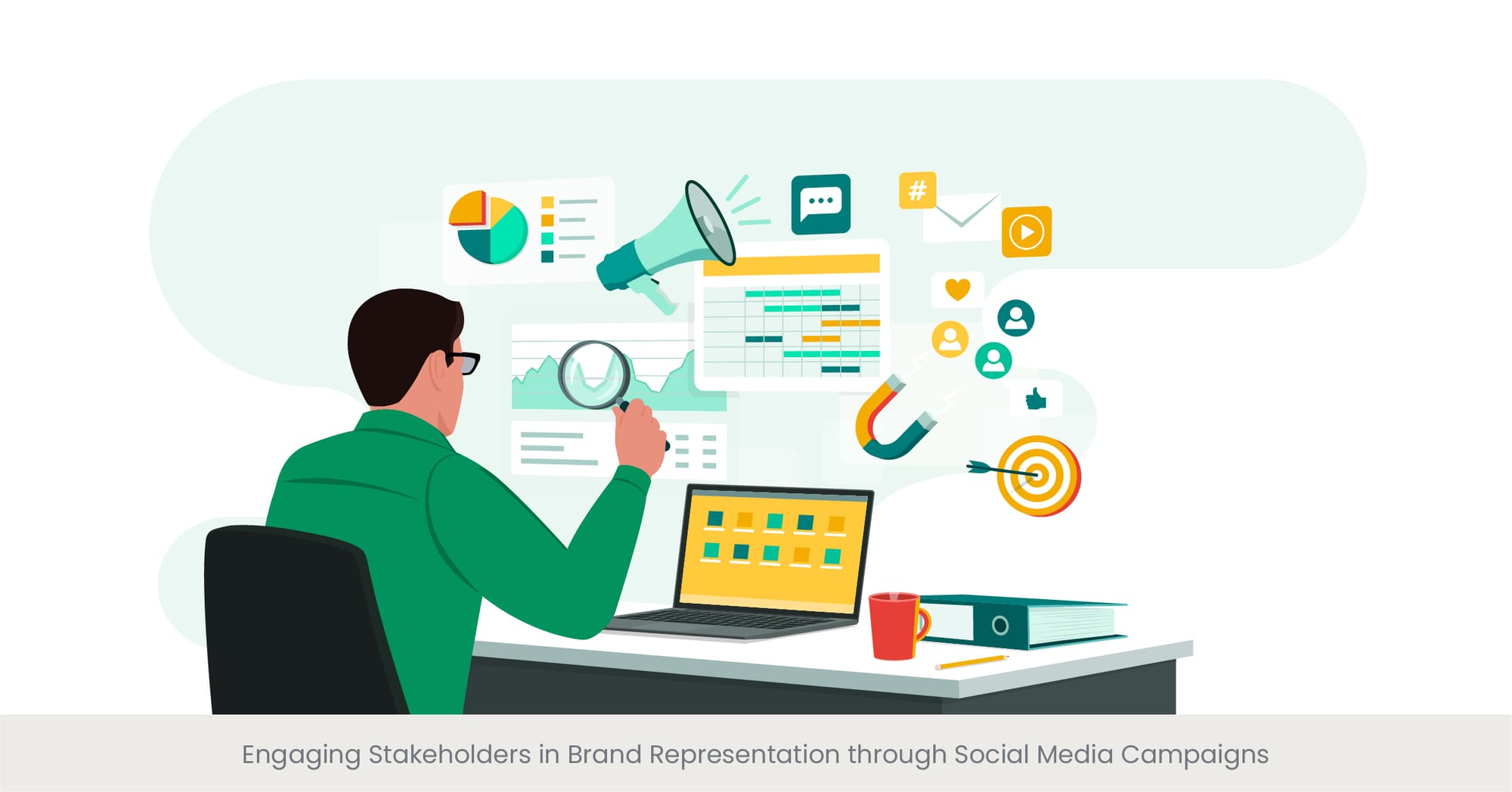
Introduction: Fostering Involvement Across the Board
Engaging stakeholders effectively in brand representation ensures that the brand’s identity and values are consistently communicated and supported at all levels of the organization. This section discusses the importance of stakeholder communication skills and involvement in maintaining brand consistency and integrity, particularly through the hiring managers recruitment processes.
Background: The Spectrum of Stakeholders
Stakeholders in brand representation include not just the marketing and HR departments but also senior management, existing employees, and even potential candidates. Each group has a unique perspective and role in how the brand is perceived and promoted, making their involvement critical to the authenticity and success of the brand’s outward expression.
Real-world Applications: Collaborative Strategies for Brand Engagement
A practical approach to engaging stakeholders might involve regular workshops and briefing sessions with various department heads to align brand representation strategies. For example, involving employees in creating content for recruitment presentations can add authenticity and provide a more accurate depiction of the company culture. Similarly, feedback from recent hires and job interview, can offer insights into how well the brand’s values are being communicated during the recruitment process. Additionally, hiring managers play a crucial role in ensuring that the brand representation aligns with recruitment strategies, evaluating candidates' commitment and suitability for the position, which further solidifies the brand's integrity in the hiring process.
Talent Acquisition Presentations
Talent acquisition presentations are an effective way to communicate your brand’s strengths and values to potential candidates. By showcasing a compelling brand story, recruitment teams can create stronger connections with top talent, presenting the company as an attractive employer. These presentations should align with your broader brand messaging and design strategy.
References and External Validation
Research underscores the benefits of active stakeholder engagement in brand representation. According to a study published in the Journal of Marketing Management, companies that engage stakeholders in brand development and representation efforts see a 20% improvement in brand consistency across different channels. Additionally, a report by the Business Management Institute highlighted that employee-involved branding initiatives increase engagement by 15% and can significantly boost employer attractiveness.
See how our clients have successfully engaged stakeholders in their brand evolution journey. Read our case studies to learn how we help businesses enhance their brand identity and recruitment strategies.
Measuring the Impact of Brand Identity in Recruitment Marketing Strategy
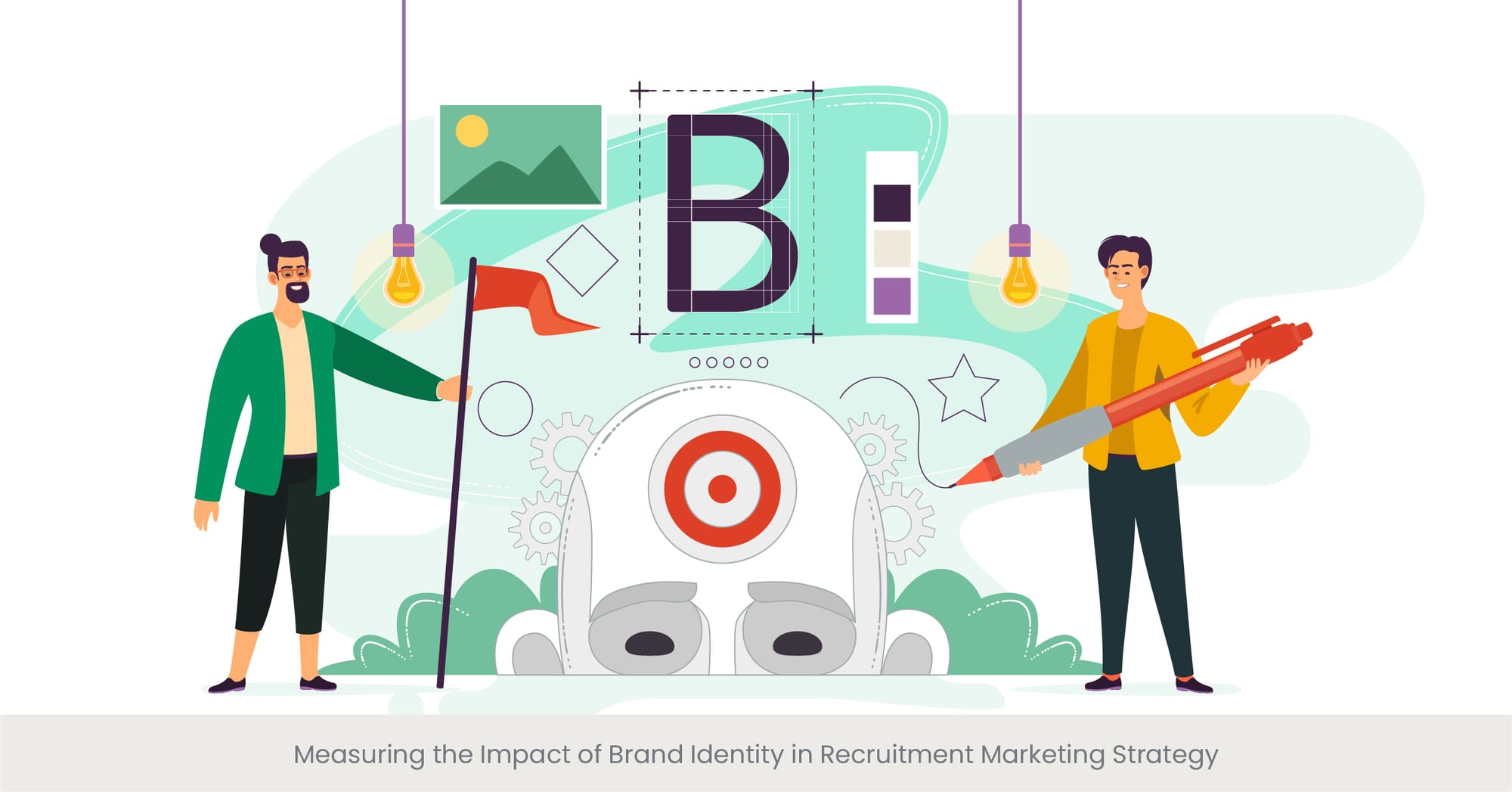
Introduction: Quantifying Brand Influence on Recruitment Success
Understanding the impact of brand identity on recruitment outcomes is crucial for refining recruitment marketing strategies and enhancing employer appeal. This section explores the metrics and methods used to measure the effectiveness of brand identity in attracting and retaining talent, providing insights into how well the brand aligns with recruitment strategy and objectives.
Background: Key Metrics for Brand Impact Assessment
To gauge the effectiveness of brand identity in recruitment, organizations typically track metrics such as applicant quality, brand perception among candidates, the average time take to hire, and retention rates. These indicators help assess how compelling the brand is to potential candidates and how it influences their decision to apply and accept offers.
Recruitment Marketing Presentations
Recruitment marketing presentations are key in attracting and converting high-quality candidates. By incorporating strong brand elements, companies can create an impactful first impression. The alignment of these presentations with broader marketing initiatives ensures consistency across all touchpoints, reinforcing the employer brand and attracting the right talent for long-term success.
Real-world Applications: Implementing Measurement Strategies
An effective measurement strategy might include surveys that capture candidate perceptions of the brand at various stages of the recruitment process. For instance, asking candidates to rate their initial impression of the company based on recruitment materials and then measuring their sentiment change after interviews or interactions with hiring manager can provide valuable feedback on the brand’s impact. Additionally, analyzing trends in applicant quality and retention rates over time can help correlate changes in brand strategy with recruitment outcomes.
Want to dive deeper into measuring brand impact in recruitment? Download our comprehensive guide on brand identity and recruitment success. Access the guide for actionable insights and tips.
Candidate Engagement Presentations
Candidate engagement presentations are powerful tools to maintain interest throughout the recruitment process. Ensuring these presentations are visually compelling and aligned with your brand identity keeps candidates engaged and excited about the opportunity. Regular feedback from candidates helps improve these presentations, enhancing overall brand perception and recruitment success.
References and External Validation
The significance of measuring brand impact in recruitment is supported by extensive research. A study from the Institute for Employment Studies found that organizations that actively measure brand perception among applicants have a 25% higher rate of successful hires. Moreover, an analysis reported in the Journal of Business Psychology demonstrates that companies with strong, well-perceived brands enjoy up to 50% lower turnover rates among new hires, emphasizing the long-term benefits of a strong employer brand.
Digital Recruitment Presentations
Digital recruitment presentations are essential in today’s hiring landscape, where virtual touchpoints often form candidates’ first impressions. These presentations should reflect the brand’s identity with engaging visuals and consistent messaging. Tracking their effectiveness through metrics like candidate feedback and application rates helps refine your recruitment marketing strategy and brand appeal.
Legal and Ethical Considerations in Branding
Introduction: Navigating the Legal and Ethical Landscape of Branding
Brand representation is not just a matter of aesthetics and marketing; it also involves navigating complex legal and ethical considerations. This section delves into the key legal and ethical issues associated with branding in recruitment, ensuring that companies maintain integrity and compliance while promoting their brand identity.
Background: Understanding Legal and Ethical Boundaries
Legal considerations in branding primarily revolve around intellectual property rights, including trademarks, copyrights, and the lawful use of images and content. Ethical considerations involve ensuring accuracy and honesty in how the brand is represented, avoiding misleading claims, and respecting cultural sensitivities and inclusivity in brand messaging.
Real-world Applications: Implementing Ethical Brand Strategies
For example, when a company uses images other interviewees or testimonials in its recruitment materials or advertising, it must have proper consent from the individuals involved and ensure that the portrayal is truthful and does not mislead candidates about the nature of the role or the company environment. Additionally, maintaining ethical transparency about what the company stands for and its values is crucial to building trust and respect among potential employees.
References and External Validation
The importance of adhering to legal and ethical standards in branding is well-documented. Legal breaches can lead to significant fines and damage to the company’s reputation, while ethical failings can result in public backlash and loss of trust among potential candidates. Studies in the Journal of Legal Studies in Business have shown that companies that rigorously adhere to ethical branding practices see improvements in both candidate quality and retention rates, as candidates feel more confident in the integrity of the company.
Ready to update your brand design and boost your recruitment efforts? Get in touch with INK PPT for custom branding and presentation solutions that make an impact.
Frequently Asked Questions
What is brand identity, and why is it important in recruitment?
Brand identity is the collection of all elements that a company creates to portray the right image to its consumer. In recruitment, a strong brand identity helps attract candidates who not only have the skills but also share the company's values, leading to better alignment and retention.
How can visual branding enhance recruitment presentations?
Visual branding enhances recruitment presentations by making them more engaging and memorable. Consistent use of company colors, logos, and design themes helps reinforce the company’s identity and can make a strong impression on potential candidates.
What are some key techniques for integrating brand identity into recruitment presentations?
Key techniques include using consistent logos and color schemes on social media, incorporating the company’s mission statement such social media campaign, displaying images that reflect the company culture, and ensuring all multimedia aligns with the overall brand ethos.
How do I align my recruitment design with company values and ethics?
Aligning design with company values and ethics involves incorporating elements that reflect these values visually and contextually. For example, if sustainability is a core value, using green color motifs and images that reflect eco-friendly practices can be effective.
Can employee testimonials enhance brand identity in recruitment?
Yes, employee testimonials are a powerful way to create and enhance brand identity in recruitment by providing a personal touch and real-life examples of what it's like to work at the company. They help build authenticity and trust with potential candidates.
Why is brand consistency important across all recruitment materials?
Brand consistency is important because it helps build recognition and trust. When all recruitment materials reflect the same brand values and aesthetic, it reinforces the company’s professional image and commitment to its identity.
What should I consider when updating my company’s brand design?
Consider whether the current design aligns with your company’s evolving goals, values, and market position. Updates should reflect current trends while staying true to the core identity that your stakeholders and customers recognize.
How can I engage stakeholders in the brand representation process?
Engage stakeholders by involving them in brainstorming sessions, soliciting their feedback on brand representation, and keeping them informed about branding guidelines. This ensures consistency and buy-in across different departments.
What metrics can I use to measure the impact of brand identity in recruitment?
Useful metrics include the number of applications received, the quality of applicants, feedback on brand perception from candidates, and employee retention rates, all of which can indicate how well organized effectively the brand identity is attracting and retaining talent.
What are the legal and ethical considerations in using branded materials in recruitment?
Legally, ensure that all branded materials, especially those involving third-party content, comply with copyright and trademark laws. Ethically, ensure all recruitment messaging is truthful, non-discriminatory, and respects candidate privacy.

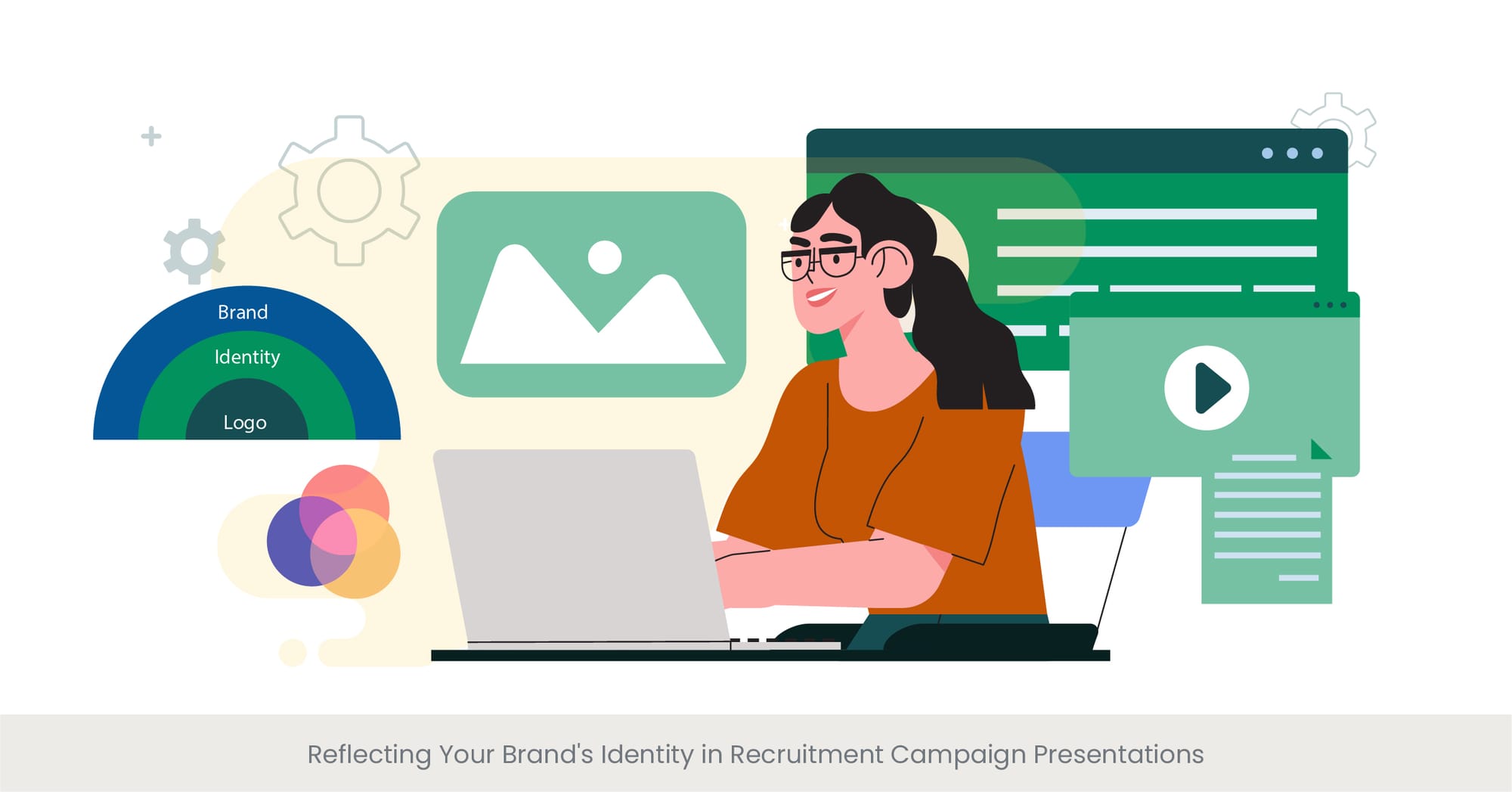

%20(1).jpg)
%20(1).jpg)


